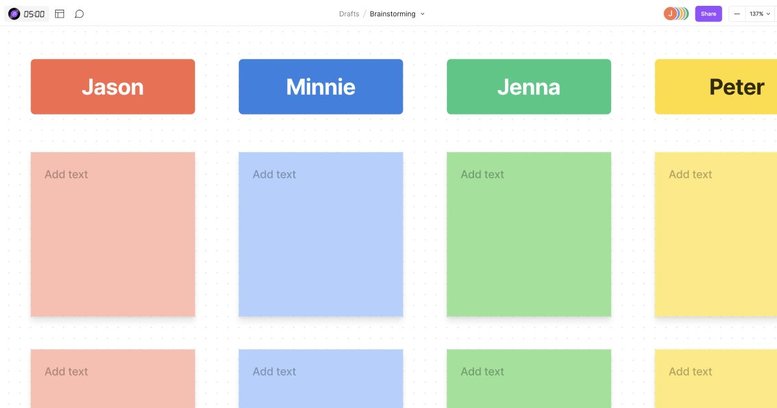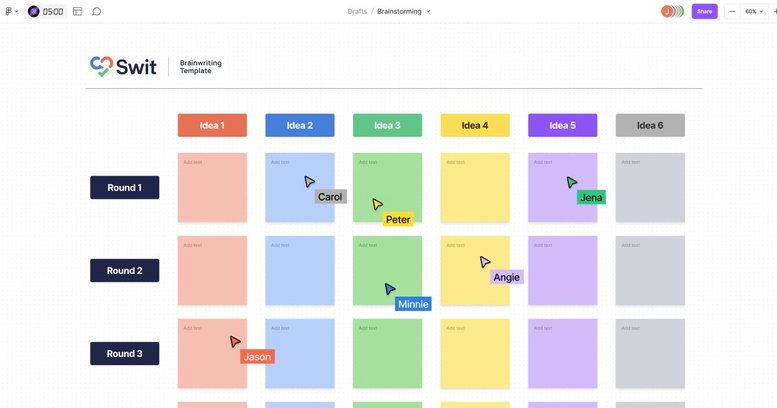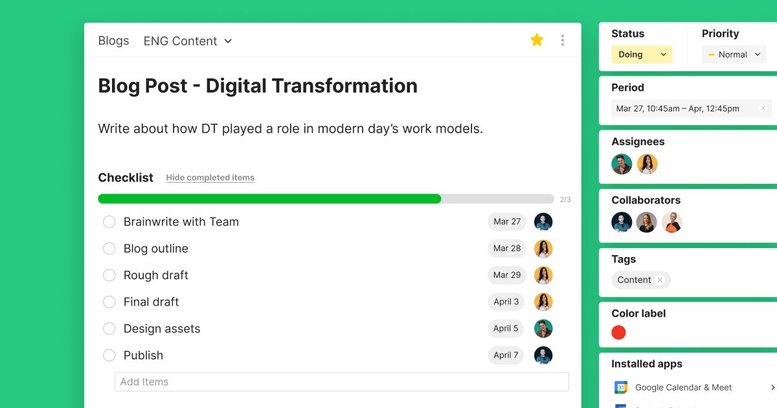
How is Brainwriting Different from Brainstorming?
Try this technique to generate more diverse ideas in a group setting
June 1, 2023
Before starting a project, it’s essential to formulate a plan that helps you achieve the desired results more efficiently. We’re all familiar with brainstorming, but that type of planning session can sometimes be biased in favor of one person's thoughts.
It's difficult to ensure every member gets an equal amount of time to share their ideas when some may be too nervous to speak so their suggestions are never heard, while others may take over the whole conversation so they are the only ones heard.
That's why Berns Rohrbach came up with the concept of 'brainwriting' as a way to ensure that all ideas were given the chance to bloom. Brainwriting is a technique where participants write down all their proposals and then share them with the rest of the group to see how they can be adapted. There are many ways you can use brainwriting for your upcoming projects.
The Five Benefits of Brainwriting
It creates a low-stakes environment for everyone to share their ideas, turning a discussion into an actual collaboration in a safe space.
You’re able to develop more elaborate concepts by writing them out in a set time frame.
Those who are shy are given the spotlight to share their proposals so that everyone feels heard.
A group-think consensus is eliminated since everyone’s suggestions are already written down and considered.
There’s a diverse pool of thoughts to consider when drawing conclusions so you can have more ideas to choose from or combine them all into one complex concept.

How to Start a Brainwriting Session
First, create a template you would like to use for your brainwriting session, or use ours here. With Swit, you can set up a template using Google Docs or another program of your choice then share it in a task card, or a chat channel specifically for brainwriting. You can even add the template to a channel tab for quick reference without needing to leave the Swit interface.
Come up with a question or guide for your project to frame your group’s proposals. For example, if you are working on a social media post, you could come up with a guide for how to approach the post that includes the theme, caption length, and type of photo that you want to use. Then, discuss the guidelines of the strategy you are trying to follow via a meeting, task card, or chat channel. Encourage them to come up with ideas related to the given strategy that you can use on the post within the given timeframe.
Once everyone is finished writing down their thoughts, allow your team to share them in a meeting, task card, or chat channel. Participants can take notes and figure out how to expand on all presented suggestions. After a few more rounds of brainwriting, all gathered proposals can expand to become a framework for the social media post.

Types of Brainwriting
6-3-5 Brainwriting
The 6-3-5 brainwriting exercises are split into several rounds, including six people writing three ideas in five minutes. After the first round, everyone passes their written thoughts to the next person, who builds upon each idea given to them. Then, the proposals get passed down to the next person, where they also add on to each proposal.
Once everyone finishes building onto all presented concepts, they are collected and discussed among the group. The team can then collaborate and agree on the best direction for the project, combining multiple suggestions into one.
Remote Brainwriting with Swit
Remote brainwriting is a less formal method for remote workers or those who like to think without the confines of a clock, and is perfect for a virtual space like Swit. First, someone comes up with a prompt for the rest of the team to follow as they create their proposals. On Swit, it could be on a task card or chat channel.
Throughout the day or week, members can comment their thoughts for everyone else to see based on the prompt. Once they are submitted, all the ideas are reviewed and a direction is collectively agreed upon.

You can also create a task card and add subtasks for each person so they have a private space to share their proposals. The task assignee can create a checklist, letting their team know when the brainwriting session is due. Once everyone is done sharing within their subtasks, they can collaborate on the best direction to take on the main task card. The assignee can add on to the checklist based on the concept chosen.
Along with subtasks, you could have everyone write their thoughts down in a Google Doc or Microsoft Word document and share it to a chat channel or task card. Then, start a discussion in the comments to see how the ideas might be combined. Once a concept is chosen, update the checklist to keep everyone in the loop on what they’re assigned to complete.
The ideation tabs within chat channels are also a great way to share suggestions with your team. You can collect everyone’s thoughts to see how you would want to proceed with a project. If you need a face-to-face meeting, you can also drag-and-drop a brainwriting meeting link into a chat channel so everyone can attend.
By turning your brainstorming sessions into brainwriting sessions, you’re able to hear more of your team’s voices and diversify your task directions. Start a brainwriting session with Swit and see how you can take your projects to the next level.
Ashley Mae Orcutt, Creative Copywriter